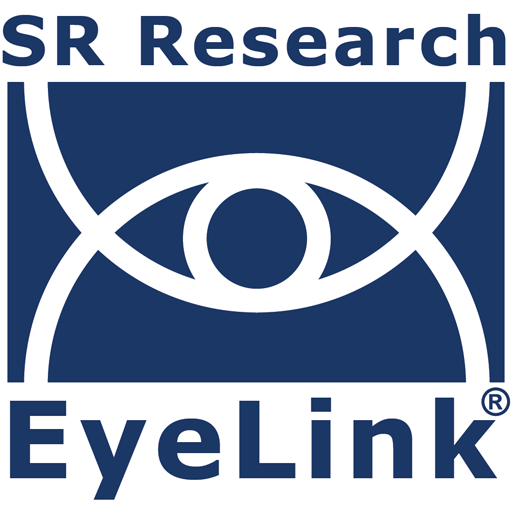CASE STUDY: Revealing Whole-Brain Causality Networks during Guided Visual Searching

In our daily lives, eye movements are fundamental to how we actively sample visual information from our environment. However, understanding how underlying brain mechanisms are affected by goal-directed behavior remains a significant challenge. A recent study by Kiefer et al. (2022), “Revealing whole-brain causality networks during guided visual searching,” addresses this by combining magnetoencephalography (MEG) with eye-tracking technology to investigate changes in interregional brain interactions during two forms of active vision: freely viewing natural images and performing a guided visual search. This case study highlights the critical role of eye tracking in enabling precise temporal and spatial analysis of brain activity in response to dynamic visual input.
The study aimed to uncover how goal-directed processing of naturalistic visual stimuli affects functional brain networks during active vision. While previous research utilized fMRI and EEG, these methods have limitations in temporal and spatial resolution, respectively, for capturing the rapid processes associated with fixations (averaging 220 ms). To overcome this, Kiefer et al. employed MEG for its high temporal resolution and improved spatial resolution compared to EEG.
Integration of Eye Tracking and MEG Methodology
A key methodological innovation was the integration of eye tracking with MEG. Participants (31 healthy individuals, 14 female, aged 18-40) engaged in visual tasks while their eye movements were precisely recorded with a long-range SR Research EyeLink 1000 eye tracker. This allowed researchers to pinpoint the exact moment of fixation onset, which served as a crucial time-locking event for analyzing fixation-related evoked activity (FRA) in the brain. The study focused on two main conditions: “free viewing” (FV), where participants freely explored natural images, and “visual search” (VS), where they searched for a specific target object within an image.
Eye tracking played a pivotal role in the study’s ability to create “fixation-related evoked field (FRF) epochs.” By accurately detecting saccades and fixations, the EyeLink 1000 system provided precise timings of when and where participants fixated. This allowed for the extraction of neural responses directly linked to visual input being processed at a given moment. The researchers used the fixation timings to create epochs where time 0 corresponded to fixation onset. This allowed for baseline correction and normalization of the sensor time courses, leading to the identification of regions of interest (ROIs) with significant FRA using spatiotemporal cluster permutation testing (SCPT).
Eye Tracking Provides Precise Temporal Markers of Visual Engagement
The integration of eye tracking with MEG recording revealed several significant findings:
- Identification of ROIs: Eye tracking allowed for the precise identification of ROIs with significant activity during both free viewing and guided visual searching. These included a temporoparietal cluster (posterior insula, transverse temporal gyri, superior temporal gyrus, and supramarginal gyrus) and a dorsal cluster.
- Correlation with Behavioral Performance: Eye-tracking data facilitated the correlation analysis between FRA amplitudes during fixations on the search target and response times. A significant negative correlation was found in the right supramarginal gyrus (SMG), indicating that higher activity in this region during target fixations correlated with shorter response times. This highlights the SMG’s involvement in integrating visual input for object recognition and guiding attention, and crucially, its role in enabling faster target identification.
- Revealing Causal Interactions: The accurate fixation onset data from eye tracking was essential for computing whole-brain effective connectivity networks using generalized partial directed coherence (GPDC). This analysis showed that, while similar ROIs were engaged in both tasks, the way these ROIs interacted differed significantly. Notably, the right SMG emerged as a central node during visual search, exhibiting the highest degree of causal interactions.
- Specific Network Connections: Eye tracking enabled the observation of a unique causal interaction during visual search: a connection from the right SMG to the right paracentral lobule (ParaCeL), the location of the supplementary eye field (SEF). This connection, observed in lower frequency bands, suggests that the right SMG provides the right SEF with information to update the search priority map for saccade guidance, directly linking visual processing to eye movement control.
The study by Kiefer et al. demonstrates the indispensable role of eye tracking in neuroscience research, particularly in the context of active vision. By providing precise temporal markers of visual engagement, eye tracking allowed for a detailed investigation of fixation-related brain activity and the complex causal interactions within brain networks during both free viewing and guided visual search. The findings underscore the importance of regions like the right SMG in object recognition, attention shifting, and the dynamic guidance of eye movements, providing valuable insights into the neural mechanisms underlying everyday visual behavior. This research exemplifies how combining high-resolution neuroimaging techniques with accurate behavioral tracking can unlock a deeper understanding of brain function.
For information regarding how eye tracking can help your research, check out our solutions and product pages or contact us. We are happy to help!
